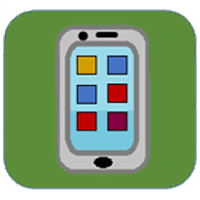Search Results: poker+app-%E3%80%90%E2%9C%94%EF%B8%8F%E6%8E%A8%E8%96%A6DD96%C2%B7CC%E2%9C%94%EF%B8%8F%E3%80%91-%E5%BE%B7%E5%B7%9E%E6%92%B2%E5%85%8B%E9%81%8A%E6%88%B2%E7%B6%B2%E7%AB%99-poker+approig8-%E3%80%90%E2%9C%94%EF%B8%8F%E6%8E%A8%E8%96%A6DD96%C2%B7CC%E2%9C%94%EF%B8%8F%E3%80%91-%E5%BE%B7%E5%B7%9E%E6%92%B2%E5%85%8B%E9%81%8A%E6%88%B2%E7%B6%B2%E7%AB%99gmoh-poker+appc9kkb-%E5%BE%B7%E5%B7%9E%E6%92%B2%E5%85%8B%E9%81%8A%E6%88%B2%E7%B6%B2%E7%AB%990de5
View factsheet.
While inconvenient for your average hiker or boater, major shifts in the weather can be deadly for firefighters. Longer and more intense fire seasons make accurate and timely weather predictions crucial to firefighter safety. To answer this need, the Fire Weather Alert System (FWAS) was developed by Jason Forthofer, Research Mechanical Engineer, and Natalie Wagenbrenner, Research Meteorologist, both from the Rocky Mountain Research Station’s Missoula Fire Sciences Laboratory. The FWAS is a mobile app that gathers weather data from many sources into a single convenient space and provides firefighters with individualized, easy-to-use, and timely weather alerts on their phones.
Access the web app.
Map additions to the SGI Web App allow users to easily visualize songbird distribution, bolstering multi-species conservation across the American West.
EPA researchers initiated a citizen science project called Smoke Sense. This project has two broad objectives. The first to increase awareness of the known health effects associated with exposure to wildfire smoke. The second is to further advance the scientific understanding of that relationship, specifically to:
- Understand the subclinical health impacts of wildland fire smoke
- Discover how people protect their health during smoke exposure
- Develop effective strategies to communicate health risks from smoke exposure
Individuals who want to contribute to science can participate in the study by using the Smoke Sense app, a publicly available mobile application on the Google Play Store and the App Store.
Visit the Biomass Ready App website.
Biomass Ready is a quick and easy process to help teams design new community buildings that can better adapt to an uncertain energy future. Today the economics of biomass may not be favorable, but your community will own and operate your new building for decades, perhaps even a century. Over the lifetime of your building, your community may decide to install a biomass boiler system. Will your building be ready? Biomass Ready will help you avoid inadvertently creating barriers that make adding biomass in the future prohibitively expensive. If you can add a biomass system to your building without extensive deconstruction or demolition, your building is Biomass Ready. And Biomass Ready is simple enough that you can include it in your RFP (Request for Proposals) process – encouraging your bidders to compete on designing for future energy flexibility!
Webinar recording.
Presented by: Sean Healey and Zhiqiang Yang
Forest managers increasingly require statistically grounded estimates of forest carbon storage at the resolution of individual ownerships (a few thousand acres). Carbon offset markets and general recognition of climate change mitigation as an ecosystem service provide incentive for monitoring carbon, but stand exams are costly, and varying methods may reduce comparability across ownerships. NASA’s GEDI mission provides high-quality lidar data across the country, and the Forest Service’s OBIWAN tool (Online Biomass Inference using Waveforms and iNventory) allows owners to generate and document GEDI-based estimates of mean carbon storage for their own land.
Access app and tool.
The Sage Grouse Initiative Interactive Web App is a tool to catalyze and improve habitat conservation efforts across the western United States. It presents cutting-edge geospatial data covering 100 million acres, which helps visualize, distribute, and interact with information about the sagebrush-steppe ecosystem.
Developing Treatment Alternatives
Treatment comparison is one of the more complex parts of the IFTDSS app. There’s no doubt that comparing landscapes is tricky business. If you find yourself scratching your head or staring at the screen a lot, join us to help take some of the mystery out of landscape comparisons! Recorded 13 April 2018.
Modeling and Reports
The beauty of IFTDSS is that nearly everything is exportable as a report or summary. With a fairly large number of items on each report it’s easy to get lost. Join us to take some of the mystery out of IFTDSS reports and reporting. Recorded 30 March 2018.
Landscapes and Editing
Trying to figure out how to edit landscapes in IFTDSS or just interested in picking up some tips and tricks to do it better? This webinar is for those trying to learn how to edit landscapes in IFTDSS to better represent their area! Recorded 23 March 2018.
IFTDSS Map Studio Demonstration
In this webinar we demonstrate using Map Studio for finding an area of interest, adding landscapes and model runs, and working with shapes and shapefiles. Recorded 16 March 2018.
Navigating IFTDSS
This demonstration highlights the overall layout of IFTDSS. It includes the Planning Cycle, file storage in My Workspace, Map Studio interface, and Modeling Playground. Recorded 9 March 2018.
IFTDSS Demonstration and Discussion
This demonstration of IFTDSS, and the following discussion, was a presentation to the Fire Science Exchange Network on September 21, 2017.
Access app.
SoilWeb Apps from the UC Davis California Soil Resource Lab provide access to USDA-NCSS detailed soil survey data (SSURGO) for most of the United States.
Access RAP App.
The Rangeland Analysis Platform (RAP) is an innovative online mapping tool that can be used by anyone—no fees or registration required. The tool provides quick snapshots of rangeland vegetation. It allows users to easily compare trends in rangeland resources through time at a ranch, county, or watershed scale.




